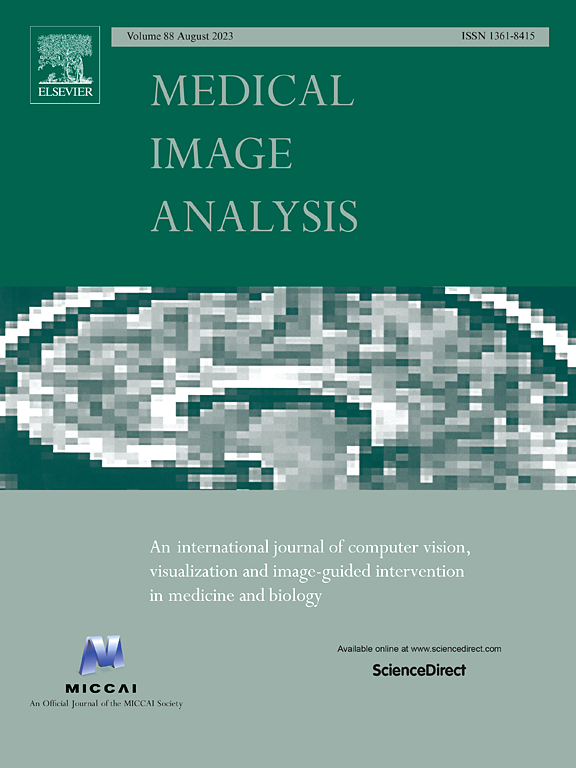DSAM: A deep learning framework for analyzing temporal and spatial dynamics in brain networks
IF 10.7
1区 医学
Q1 COMPUTER SCIENCE, ARTIFICIAL INTELLIGENCE
引用次数: 0
Abstract
Resting-state functional magnetic resonance imaging (rs-fMRI) is a noninvasive technique pivotal for understanding human neural mechanisms of intricate cognitive processes. Most rs-fMRI studies compute a single static functional connectivity matrix across brain regions of interest, or dynamic functional connectivity matrices with a sliding window approach. These approaches are at risk of oversimplifying brain dynamics and lack proper consideration of the goal at hand. While deep learning has gained substantial popularity for modeling complex relational data, its application to uncovering the spatiotemporal dynamics of the brain is still limited. In this study we propose a novel interpretable deep learning framework that learns goal-specific functional connectivity matrix directly from time series and employs a specialized graph neural network for the final classification. Our model, DSAM, leverages temporal causal convolutional networks to capture the temporal dynamics in both low- and high-level feature representations, a temporal attention unit to identify important time points, a self-attention unit to construct the goal-specific connectivity matrix, and a novel variant of graph neural network to capture the spatial dynamics for downstream classification. To validate our approach, we conducted experiments on the Human Connectome Project dataset with 1075 samples to build and interpret the model for the classification of sex group, and the Adolescent Brain Cognitive Development Dataset with 8520 samples for independent testing. Compared our proposed framework with other state-of-art models, results suggested this novel approach goes beyond the assumption of a fixed connectivity matrix, and provides evidence of goal-specific brain connectivity patterns, which opens up potential to gain deeper insights into how the human brain adapts its functional connectivity specific to the task at hand. Our implementation can be found on https://github.com/bishalth01/DSAM.
求助全文
约1分钟内获得全文
求助全文
来源期刊

Medical image analysis
工程技术-工程:生物医学
CiteScore
22.10
自引率
6.40%
发文量
309
审稿时长
6.6 months
期刊介绍:
Medical Image Analysis serves as a platform for sharing new research findings in the realm of medical and biological image analysis, with a focus on applications of computer vision, virtual reality, and robotics to biomedical imaging challenges. The journal prioritizes the publication of high-quality, original papers contributing to the fundamental science of processing, analyzing, and utilizing medical and biological images. It welcomes approaches utilizing biomedical image datasets across all spatial scales, from molecular/cellular imaging to tissue/organ imaging.
 求助内容:
求助内容: 应助结果提醒方式:
应助结果提醒方式:


